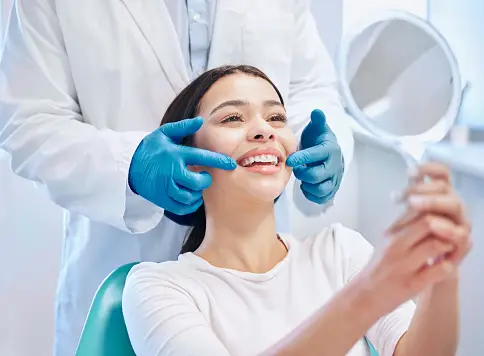A confident smile can significantly impact one’s self-esteem and overall well-being. Dental braces are a common solution for achieving straight teeth and a beautiful smile. In Pakistan, the demand for orthodontic treatment is growing as more people recognize the benefits of a well-aligned smile. This comprehensive guide will walk you through everything you need to know about dental braces in Pakistan, from the types available to the treatment process and aftercare.
What Are Braces?
dental braces are orthodontic devices used to correct misaligned teeth and jaw positions. They work by applying continuous pressure over time, gradually moving teeth into the desired position. Braces consist of brackets, wires, and bands that are adjusted periodically by an orthodontist.
Why You Might Need Braces
Braces can address various dental issues, including crowded or crooked teeth, gaps, overbites, underbites, and crossbites. Orthodontic treatment not only improves the appearance of your smile but also enhances oral health by making it easier to clean teeth and reducing the risk of tooth decay and gum disease.
Types of Braces
Metal Braces
Metal braces are the most traditional and commonly used type of braces. They are made of high-grade stainless steel and consist of metal brackets and wires. Metal braces are highly effective and can correct a wide range of dental issues. Modern metal braces are smaller and more comfortable than those used in the past.
Ceramic Braces
Ceramic braces function similarly to metal braces but are made of clear or tooth-colored materials, making them less noticeable. They are a popular choice for individuals who want a more discreet orthodontic treatment. Ceramic braces require careful maintenance to prevent staining.
Lingual Braces
Lingual braces are placed on the backside of the teeth, making them virtually invisible from the front. They offer the same effectiveness as traditional braces but with a hidden appearance. Lingual braces can be more challenging to clean and may cause temporary speech difficulties initially.
Invisalign
Invisalign is a modern orthodontic treatment that uses a series of clear, removable aligners to straighten teeth. The aligners are custom-made and replaced every two weeks. Invisalign is popular among adults and teenagers who prefer a nearly invisible and removable option. However, it may not be suitable for severe orthodontic issues.
The Orthodontic Treatment Process
Initial Consultation
The journey to a straighter smile begins with an initial consultation with an orthodontist. During this visit, the orthodontist will evaluate your teeth, take X-rays, and discuss your treatment options. They will recommend the most suitable type of braces based on your specific needs and preferences.
Treatment Planning
Once you decide to proceed with braces, the orthodontist will create a personalized treatment plan. This plan outlines the duration of treatment, the type of braces to be used, and any additional procedures required. Impressions of your teeth may be taken to aid in the creation of custom braces or aligners.
Fitting the Braces
During the fitting appointment, the orthodontist will attach the braces to your teeth. For traditional braces, this involves bonding the brackets to each tooth and connecting them with a wire. The process is painless, but you may experience some discomfort as your teeth adjust to the pressure.
Regular Adjustments
Throughout your treatment, you will need to visit the orthodontist regularly for adjustments. These appointments are crucial for monitoring progress and making necessary changes to the braces. Adjustments may involve tightening the wires, changing bands, or replacing aligners in the case of Invisalign.
Living with Braces
Oral Hygiene
Maintaining excellent oral hygiene is essential when you have braces. Braces can trap food particles and plaque, increasing the risk of cavities and gum disease. Brush your teeth after every meal using a soft-bristle toothbrush and fluoride toothpaste. Use interdental brushes or floss threaders to clean between the brackets and wires.
Diet Considerations
Certain foods can damage braces, so it’s important to be mindful of your diet. Avoid hard, sticky, and sugary foods that can break brackets or wires. Opt for softer foods and cut fruits and vegetables into smaller pieces. Drinking plenty of water and rinsing your mouth after eating can also help keep your braces clean.
Managing Discomfort
It’s common to experience some discomfort, especially after adjustments. Over-the-counter pain relievers can help manage any soreness. Orthodontic wax can be applied to brackets and wires that irritate the inside of your mouth. Eating soft foods and avoiding biting into hard items can also reduce discomfort.
Conclusion
Straightening your smile with dental braces is a transformative journey that boosts confidence and improves oral health. In Pakistan, a variety of braces options are available to suit different needs and preferences.
By understanding the different dental treatment processes checking the root canal treatment price in pakistan, maintaining good oral hygiene, and finding a skilled orthodontist, you can achieve the beautiful, straight smile you desire. Embrace the journey with confidence, knowing that your path to a radiant smile is well within reach.




